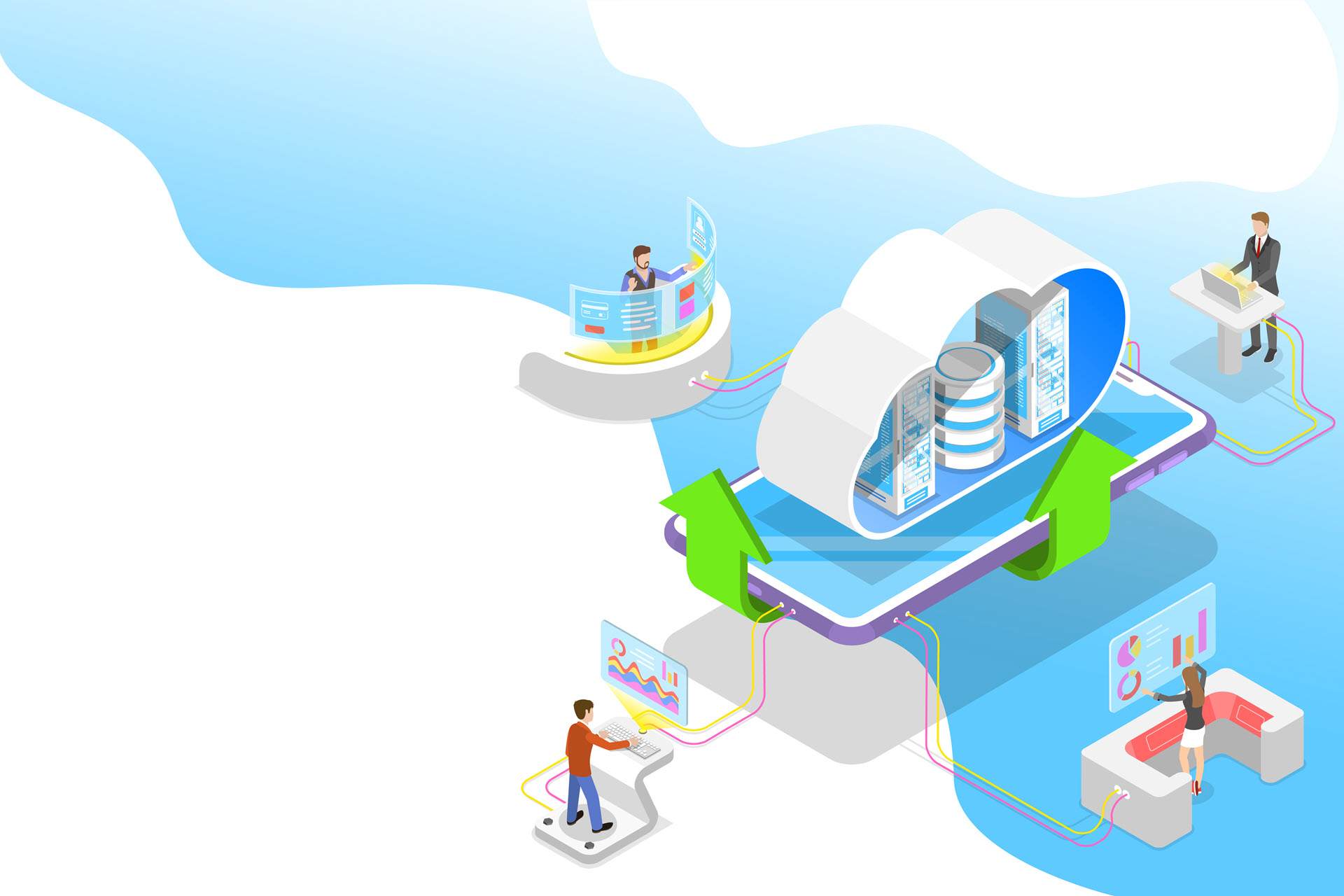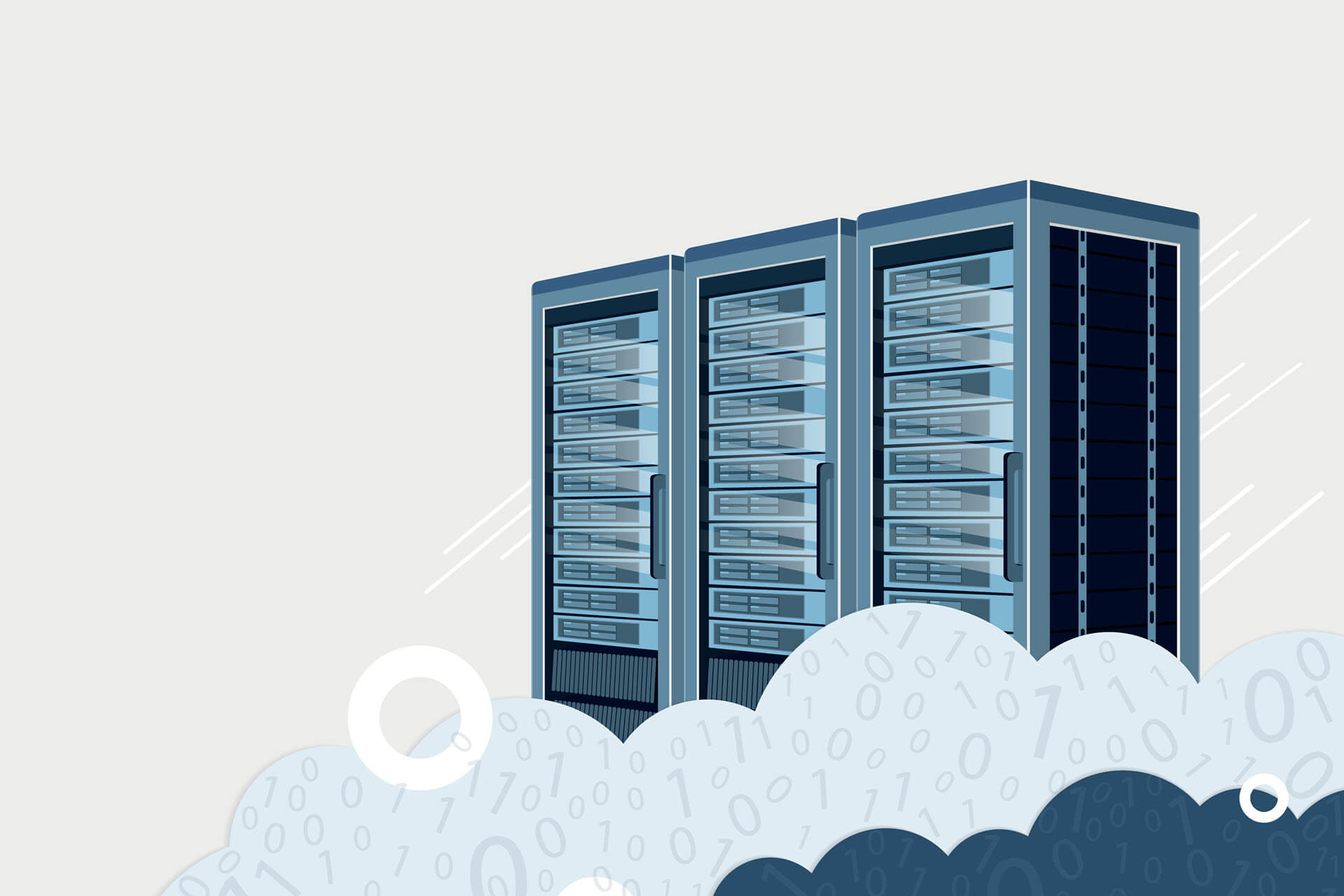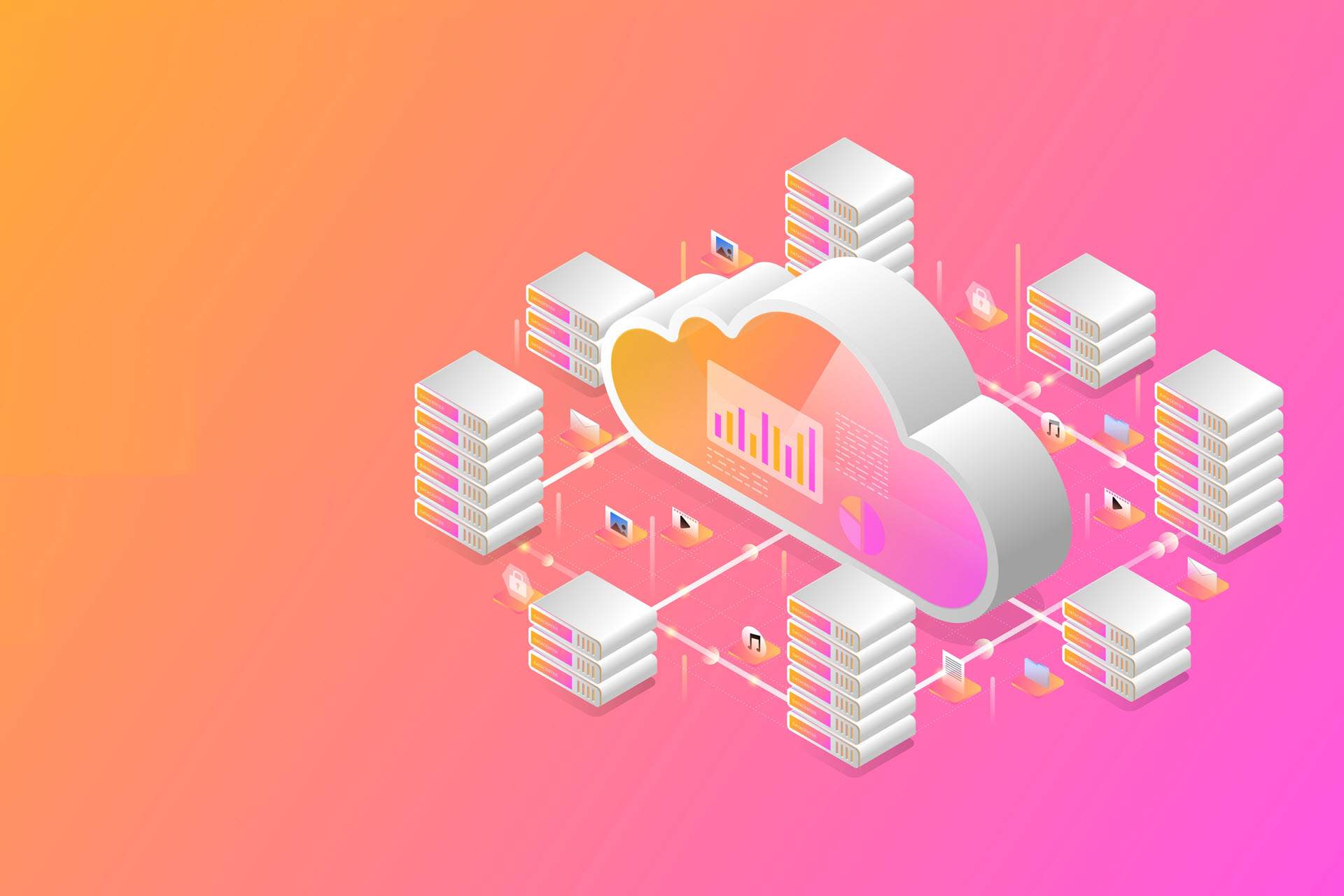Database-as-a-Service (DBaaS) is a cloud computing service that allows companies to use a database without setting up physical hardware. Users also do not need to install software or hire staff members to maintain the underlying technologies.
DBaaS simplifies database management with one-click operations, eliminates time-consuming tasks, and grants the agility for faster software development.
Read on to learn what DBaaS technology offers and how to select the ideal DBaaS provider for your team.
Database-as-a-Service Features
In a traditional setup, the database server is a part of the on-premises computing infrastructure. The local staff is responsible for installing, managing, protecting, and scaling the database.
In contrast, DBaaS is a subscription service in which the provider manages the hardware and delivers the database as a private cloud service. The service provider handles the high-level database administrative (DBA) tasks, including:
- Initial installation.
- Configuration management.
- Database maintenance.
- Performance management.
- Backups.
- Patches and upgrades.
- Disaster recovery.
- Cloud monitoring (both for the database and the underlying infrastructure).
- Maintaining high availability.
The DBaaS customer’s only responsibilities are using the database and controlling its content. However, if the company desires more control over the database, the DBaaS provider can enable more user involvement.
Another common name for DBaaS is the managed database service. This type of cloud service covers both relational and non-relational databases.
DBaaS removes the need to hire and train a team to manage the database. Instead, one staff member controls the database instances via an API and a management dashboard. The dashboard allows one-click operations that simplify complex processes such as provisioning and specification.
Once the console receives instructions from the user, the DBaaS platform provisions the database and returns a query-able endpoint. The user can use this code directly in the application.
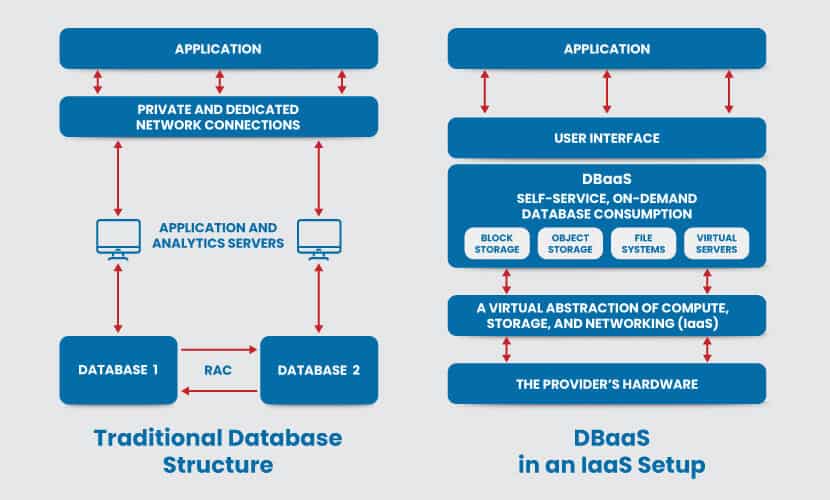
Database-as-a-Service enables users to operate a database with a common set of abstractions (primitives) without knowing the implementations. For example, a developer could add a database instance using the same set of API calls regardless of the database type (MongoDB, Oracle, MySQL, etc.). The DBaaS model also provides simple mechanics for:
- Adding users.
- Creating schemas.
- Granting permissions.
- Activity tracking.
Ensure optimal workloads with phoenixNAP’s database servers that easily and quickly scale to meet the application’s requirements. Learn everything you need to know about them in our post What Is a Database Server & What Is It Used For, an also check our database server pricing guide.
Database-as-a-Service Practical Applications
Database-as-a-Service has two primary consumers:
- Organizations that manage and maintain the cloud.
- Teams that consume cloud resources (either traditional development or DevOps teams).
DBaaS is ideal for small to medium-sized companies without big IT departments. As the DBaaS takes on the financial burden of hardware and maintenance, smaller teams can build apps that they cannot afford to support on-premises.
DBaaS is also a popular option for teams that want to set up and scale databases for complex distributed apps. For example, in an IaaS and DBaaS setup, the DBaaS solution can request resources from the IaaS platform that automatically manages the provisioning, storing, and networking processes.
Know the difference between IaaS, PaaS, and SaaS, three of the most popular types of cloud offerings on the market.
Companies also use DBaaS platforms to support specific releases or restrict the configurations users can provision. For example, a company can restrict developers to provisioning with traditional hard disks. Meanwhile, DevOps engineers can have the ability to provision higher capacity servers with SSDs.
Databases processing data with strict regulatory requirements are not suitable for DBaaS due to the risks of storing data on a cloud. Also, mission-critical applications that demand 99.999% of uptime are a better fit for in-house infrastructures.
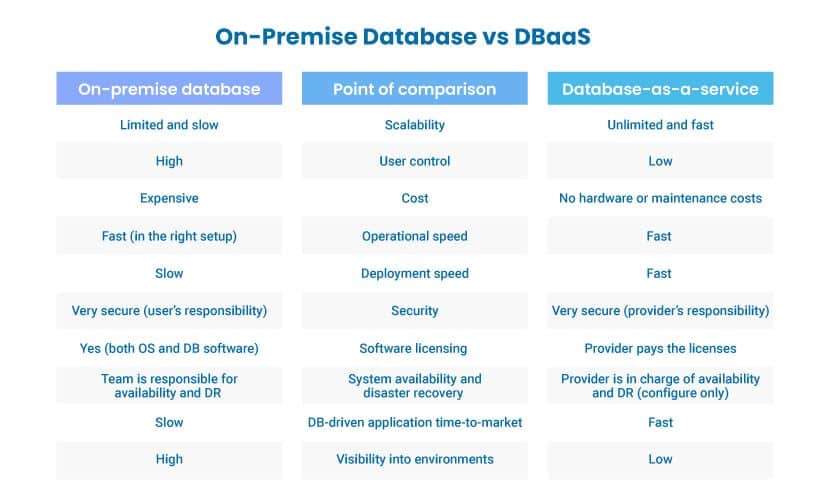
Setting Up DBaaS
Setting up DBaaS requires a cloud service and a database service. Popular cloud providers are Amazon AWS, Microsoft Azure, Oracle Cloud, Google Cloud Platform, and phoenixNAP Bare Metal Cloud. The most popular DBaaS providers are:
- Amazon (Amazon Aurora, DynamoDB, Amazon RDS, SimpleDB)
- Google Cloud (GC Bigtable, Google Cloud Datastore, GC Spanner, Google Cloud SQL)
- Microsoft Azure (Microsoft SQL Database, MA Table Storage, Microsoft DocumentDB)
- Compose (IBM)
- IBM Cloudant
- MongoDB Atlas
- Oracle Database Cloud Service
The cloud and database services do not need to be from the same provider. For example, a team can set up Bare Metal Cloud for cloud requirements and pair that service with Microsoft’s SQL Server database. However, not all cloud platforms support all database management systems (DBMS), so perform research before combining different providers.
DBaaS Benefits
DBaaS offers significant operational and financial advantages over standard on-premises databases.
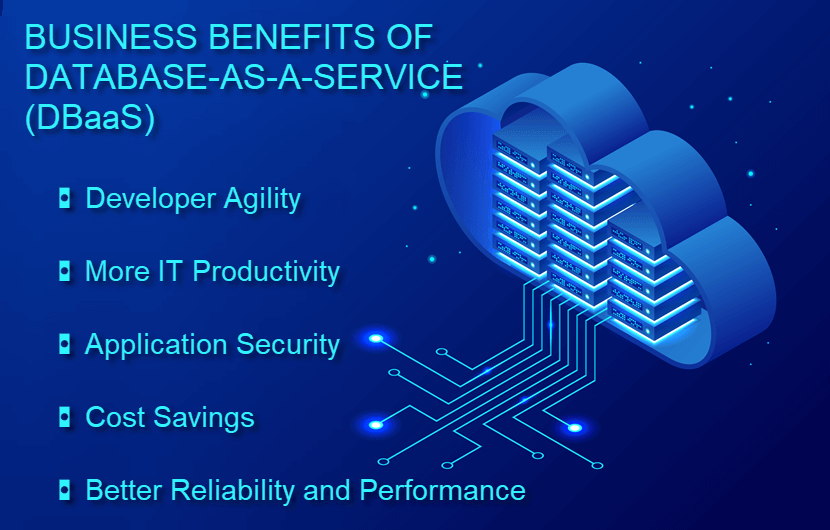
Developer Agility
Standard database deployment is a complex, multi-step process that requires various tasks. A typical deployment looks like this:
- A developer opens a request in the ticketing system.
- The ticket stays in the queue until it reaches the top of priorities.
- The IT team evaluates the ticket.
- If the request is valid, the team allocates the compute, storage, and networking resources for the new database.
- Resource configuration and installation start.
- The developer receives an entry point to the database and begins to use the new setup.
This process is far from agile, especially if the team is trying to transition to DevOps. Deploying databases this way is both prone to errors and time-consuming.
The DBaaS model requires zero IT intervention and automates the deployment process. The company establishes the standard of database provisioning, after which a developer can handle the deployment. IT admins focus on more crucial tasks, while developers can spin up and integrate a database in minutes.
This self-service model is ideal for companies trying to speed up the software development life cycle. The databases also become more consistent, which leads to better system reliability.
More IT Productivity
Standard database management requires the team to handle the tuning, monitoring, patching, upgrading, and resizing of the database. As companies grow, the number and types of databases that require management increase, and these tasks become even more time-consuming.
With DBaaS, the team saves valuable time as:
- The provider takes on most administrative duties.
- Complex procedures (like deployments, upgrades, and configuration changes) happen automatically.
- Developers can spin up and destroy multiple databases with a single operation.
The lack of repetitive duties and micro-managing allows the team to focus on more impactful tasks, such as building applications and innovating.
Application Security
Cloud database providers typically offer enterprise-level security. Good providers protect your databases with:
- Data encryption (both at rest and in transit).
- Integrated access management.
- Controls for regulatory compliance standards.
- End-to-end network security with micro-segmentation and virtual private networks.
The result of high-level security is less risk of data loss. Additionally, all major cloud providers offer a service-level agreement (SLA) that guarantees uptime.
Improve your data center security by adding strategic layers of protection that keep your data and systems safe.
Cost Savings
Database-as-a-Service is a cost-effective alternative to an in-house database setup. DBaaS allows a company to pay a predictable periodic fee based on the consumed resources. A business saves money by not having to invest in:
- Expensive, power-hungry hardware.
- Data centers.
- Software licensing.
- Additional on-hand capacity.
- Skilled staff to manage and maintain the infrastructure.
Database-as-a-Service also prevents unnecessary resource overhead. Like any cloud offering, users control how many resources they consume, which allows a business to ensure optimal consumption at all times.
Better Reliability and Performance
DBaaS solutions have high availability and run at peak performance. In the case of failure, the platform reroutes traffic to a replica and maintains uptime.
Database-as-a-Service has excellent scalability. Users can quickly and easily add storage and computing capacity to meet high processing demands. Scaling down during non-peak usage is also simple. This elasticity is ideal for dynamic database demands, such as end-of-quarter reporting or seasonal spikes in e-shopping.
A DBaaS system can also monitor the database for spikes in demands. If the user sets up policies for usage thresholds, the platform can automatically scale out as demand increases and scale back once demand reduces.
DBaaS Disadvantages
Despite notable benefits, DBaaS also has several disadvantages when compared to an on-premises database setup. These drawbacks are:
- Lack of control: In-house staff does not have access to the servers or storage behind the database. If the user’s connection goes down or the provider experiences an outage, the customer cannot reach the stored content.
- Security concerns: Storing data on a cloud can lead to a breach if the provider is not careful. Also, the customer company does not influence the physical safety of servers.
- Latency problems: Accessing data over the internet can lead to performance issues, especially when loading large amounts of data.
While worrying, these issues should not be a problem if the company partners with a reputable DBaaS provider.
Check out our article On-Premise vs Cloud to better understand how these terms relate and contrast.
How to Choose a DBaaS Provider?
Finding the right DBaaS provider starts by determining which database technology is the right fit for your application’s technical needs. Once you know what database you require, consider the factors below to choose the right DBaaS provider for your company.
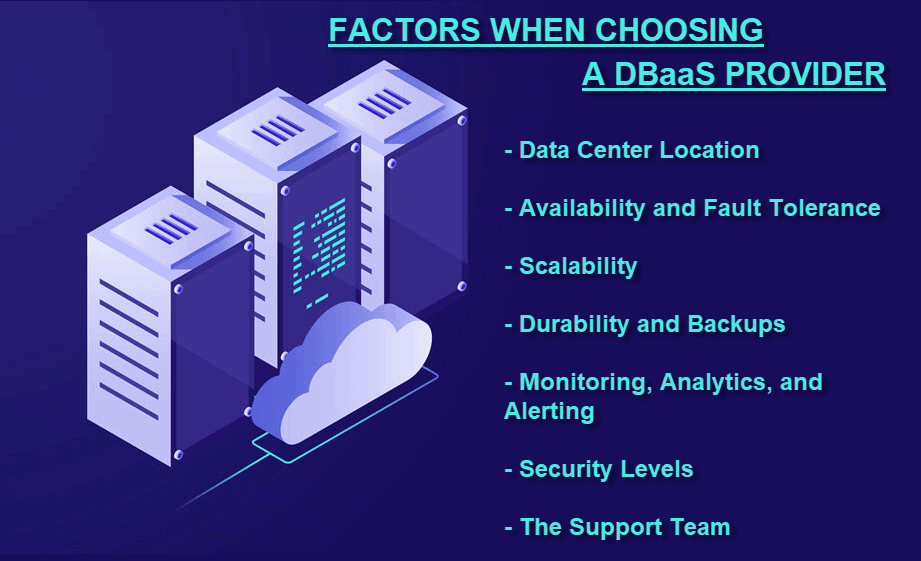
Data Center Location
The database layer should be physically close to your servers. Too much distance between the infrastructure leads to two problems:
- Latency: The time it takes to send a request to the database and receive a response impacts app performance.
- Security: The communication between your application and database needs to be private. Proximity with the database layer ensures the data is not traveling over the open internet.
Ideally, your app server and database server should be in the same data center. The less space there is between the devices, the better.
Availability and Fault Tolerance
High availability is essential to your application. Consider the following factors when choosing your DBaaS provider:
- Does the provider have an availability SLA? What is their uptime guarantee?
- How does the provider replace faulty components?
- How does the system failover work? Is the process automatic, or does the customer need to intervene?
- Does the provider offer fault tolerance via database clustering? If yes, what is the isolation between the nodes in the cluster?
- Does the provider have a global disaster recovery in the case of a regional outage?
Scalability
Your DBaaS provider must provide a service that maintains optimal performance as your data volume grows. If your application has high processing needs, do not rely solely on the provider’s benchmark tests. Instead, simulate the operation of your app to test the service with your workload.
If you expect notable growth in either data volume or traffic, ensure the provider makes it easy for your team to scale the service. Providers offer two types of scaling:
- Vertical scaling (adding more power (RAM, CPU, Disk) to an existing machine).
- Horizontal scaling (adding new machines to the pool of resources).
If your app has a large dataset, horizontal scaling (or scaling out) is the better option. Vertical scaling is a better fit for small-scale workloads due to the limit on how much hardware the provider can fit in one device.
Check out our Horizontal vs Vertical Scaling comparison article to learn about two distinct strategies for adding more resources to an IT system
Durability and Backups
All solid providers have a robust backup and recovery system in case of system failure and human error. Answer the following questions before you choose your DBaaS provider:
- Does the provider create data backups automatically?
- What backup tools does the provider use?
- Can customers make recurring plans to create backups on a custom schedule?
- Can users easily and quickly restore their data?
- Does the DBaaS provider support the point-in-time restore capability?
Read our guide to data backup strategy to ensure your business never falls victim to a data loss.
Monitoring, Analytics, and Alerting
Monitoring, analytics, and alerting give insight into the health of your database. The provider must enable monitoring and alerts that inform customers when metrics fall outside the normal range. Consider the following when choosing your DBaaS provider:
- Can you create custom alerts?
- Are there automatic alerts in case of a component failure?
- Will you have real-time insight into all performance metrics?
- Does the provider offer historical reporting of database metrics?
- Is there easy access to database log files?
Security Levels
A DBaaS provider must ensure your data’s safety and provide you with tools to protect cloud assets from unauthorized access. Answer the following questions to find the right provider:
- Does the platform verify users before they access the cloud database? Is there support for 2FA?
- Does the provider log all access requests?
- Does the platform support database communication via SSL (Secure Sockets Layer) with certificate validation?
- Is there support for data-at-rest and in-transit encryption?
- Does the provider run penetration tests to ensure high levels of security?
The Support Team
A fast and helpful support team is vital for providing advice and responding to emergencies. The following questions will help you pick a provider with a solid support team:
- Does the provider charge an additional fee for support?
- Does the SLA include support response times?
- Do you need to purchase premium support to guarantee quick response times?
- What is the provider’s reputation when it comes to customer care and support?
A Cost-Effective Alternative to On-Premises Database Management
Database-as-a-Service can add agility and flexibility to development teams no matter the size or industry. Use DBaaS to free your team from maintenance duties and engage developers with tasks that lead to innovation and business growth.
